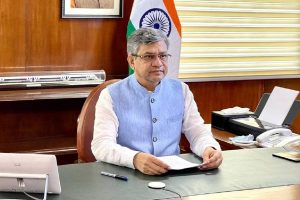Union Ministry of Health and Family Welfare on Friday released revised operational guidelines and training modules for non-alcoholic fatty liver disease (NAFLD), for prevention and control.
Speaking on the occasion, Union Health Secretary Apurva Chandra said, “India has taken the lead in recognising NAFLD as a major non-communicable disease (NCD). NAFLD is rapidly emerging as a major public health concern, closely linked with metabolic disorders such as obesity, diabetes, and cardiovascular diseases. Out of 10, one to three people can have NAFLD which highlights the impact of the disease.”
Stating that the release of revised operational guidelines and training modules reflects the importance being accorded by the Health Ministry to curb the disease, he said, “These documents will provide a framework for health workers at all levels, from community health workers to medical officers.”
Emphasising the importance of a continuum of care for people who have been diagnosed with NCDs, Chandra underlined the need for lifestyle modification to reduce the prevalence of NAFLD.
In his address, Dr SK Sarin, Director, the Institute of Liver and Biliary Sciences (ILBS) said that the release of the two documents is a momentous step whose results will be reflected in the next few years.
Pointing out that many NCDs such as diabetes, heart disease, and cancer are linked to liver health, he underscored the importance of maintaining a healthy liver.
NCDs account for more than 66 per cent of deaths in the country and are strongly associated and causally linked with major behaviour risk factors such as tobacco use (smoking and smokeless), alcohol use, poor dietary habits, insufficient physical activity, and air pollution, as per the Director.
“NAFLD is emerging as an important cause of liver disease in India. It could be assuming a silent epidemic with community prevalence ranging from 9 per cent to 32 per cent, depending on age, gender, area of residence and socioeconomic status. In other words, we are saying that out of 10 persons, 1 to 3 persons will be having Fatty liver or related disease,” he said.
India contributes high numbers to NCDs globally and one of the core causes of metabolic diseases is in the liver. Realising the growing burden and urgent need to address it, India became the first country to integrate the NAFLD in the National Programme for Prevention and Control of NCDs in 2021, as per the Health Ministry.
Considering the recent evidence-based interventions in the field of NAFLD, there was a dire need to revise the guidelines with updated information for prevention, control, and management to equip the medical care providers and help in the prevention and control of NAFLD, it said.
“The guidelines focus on health promotion and early detection which are important for ensuring that patients with NAFLD receive timely and appropriate care. It also advocates for a multidisciplinary approach, integrating the efforts of healthcare providers from various disciplines to offer holistic care to individuals affected by NAFLD,” it added.












